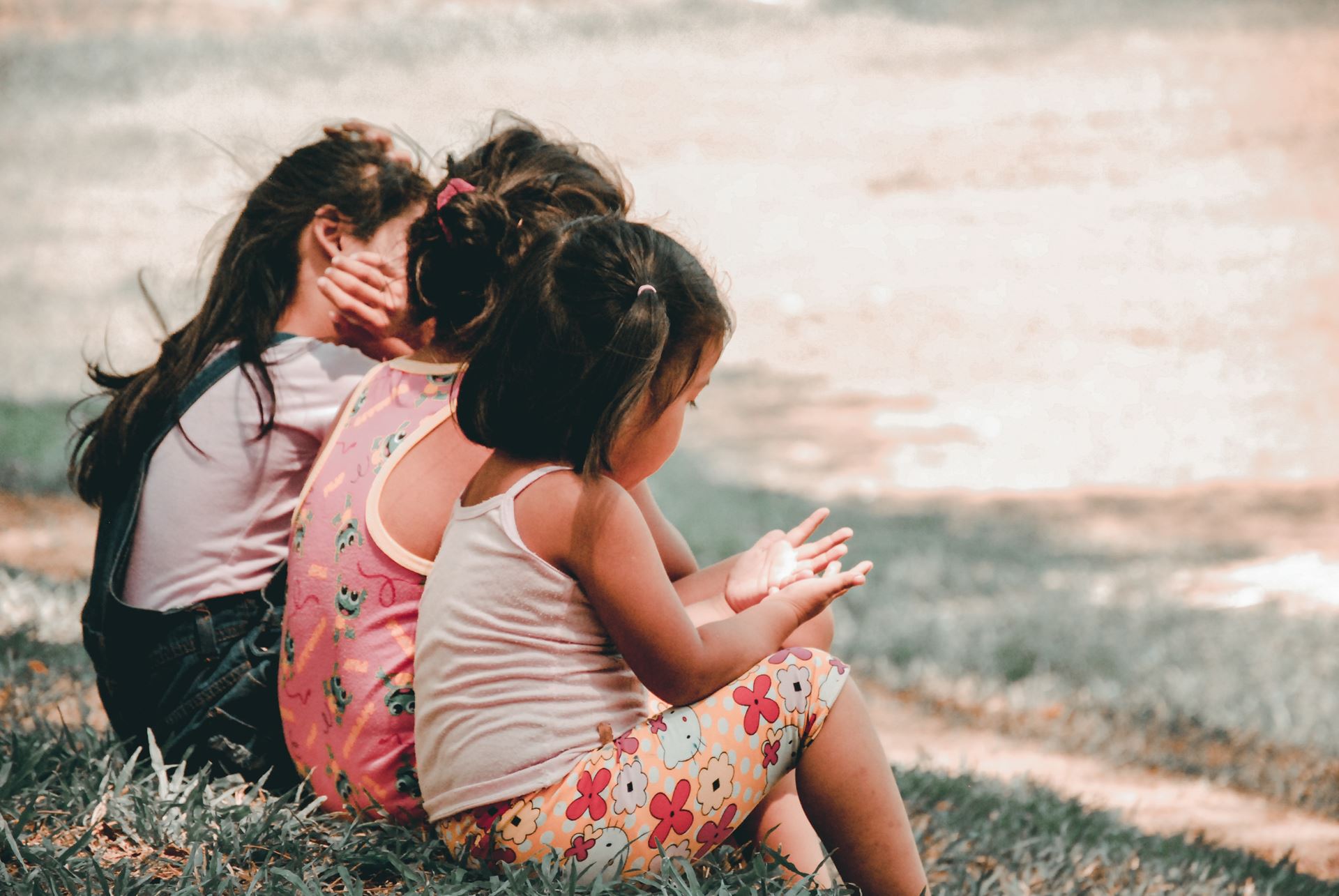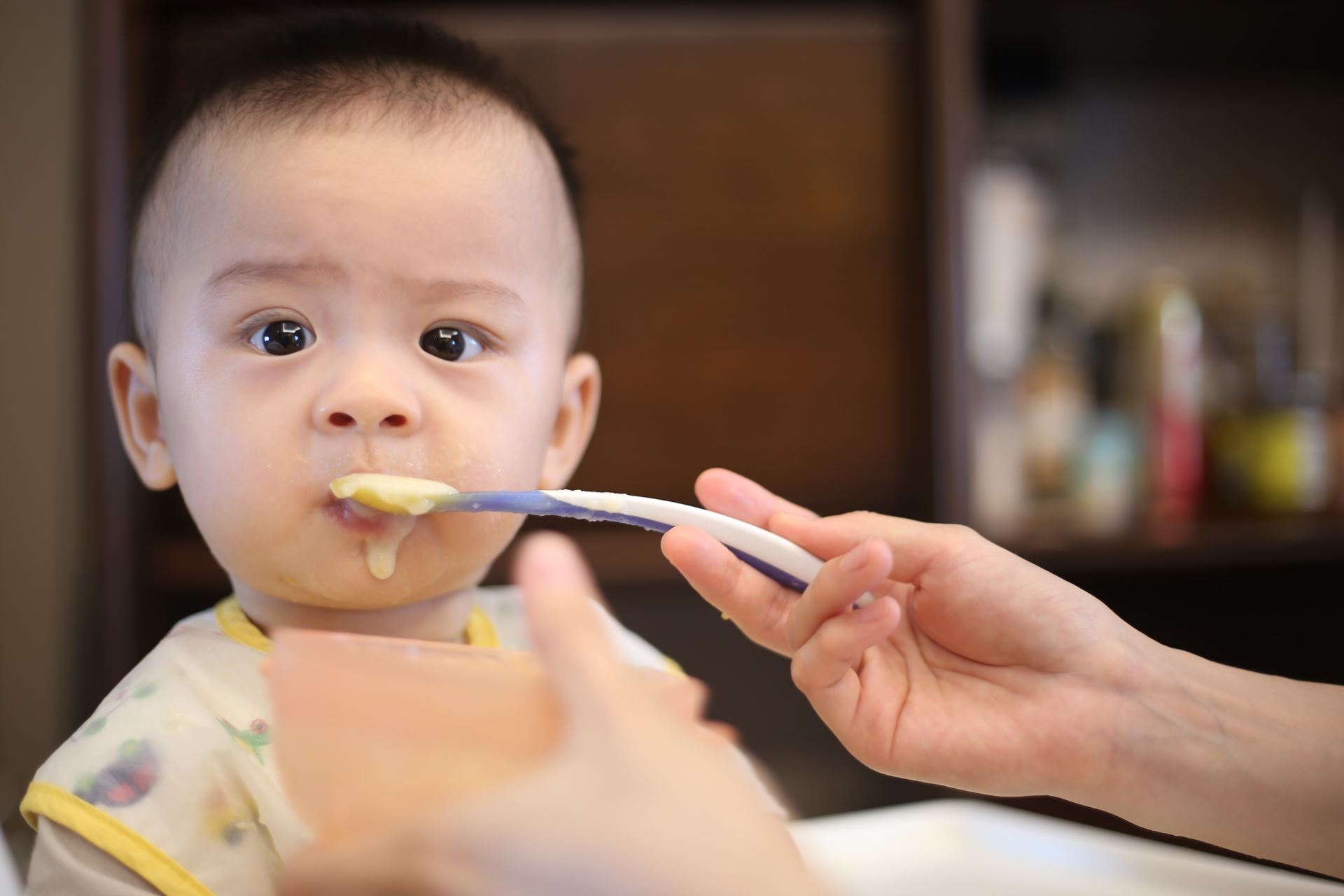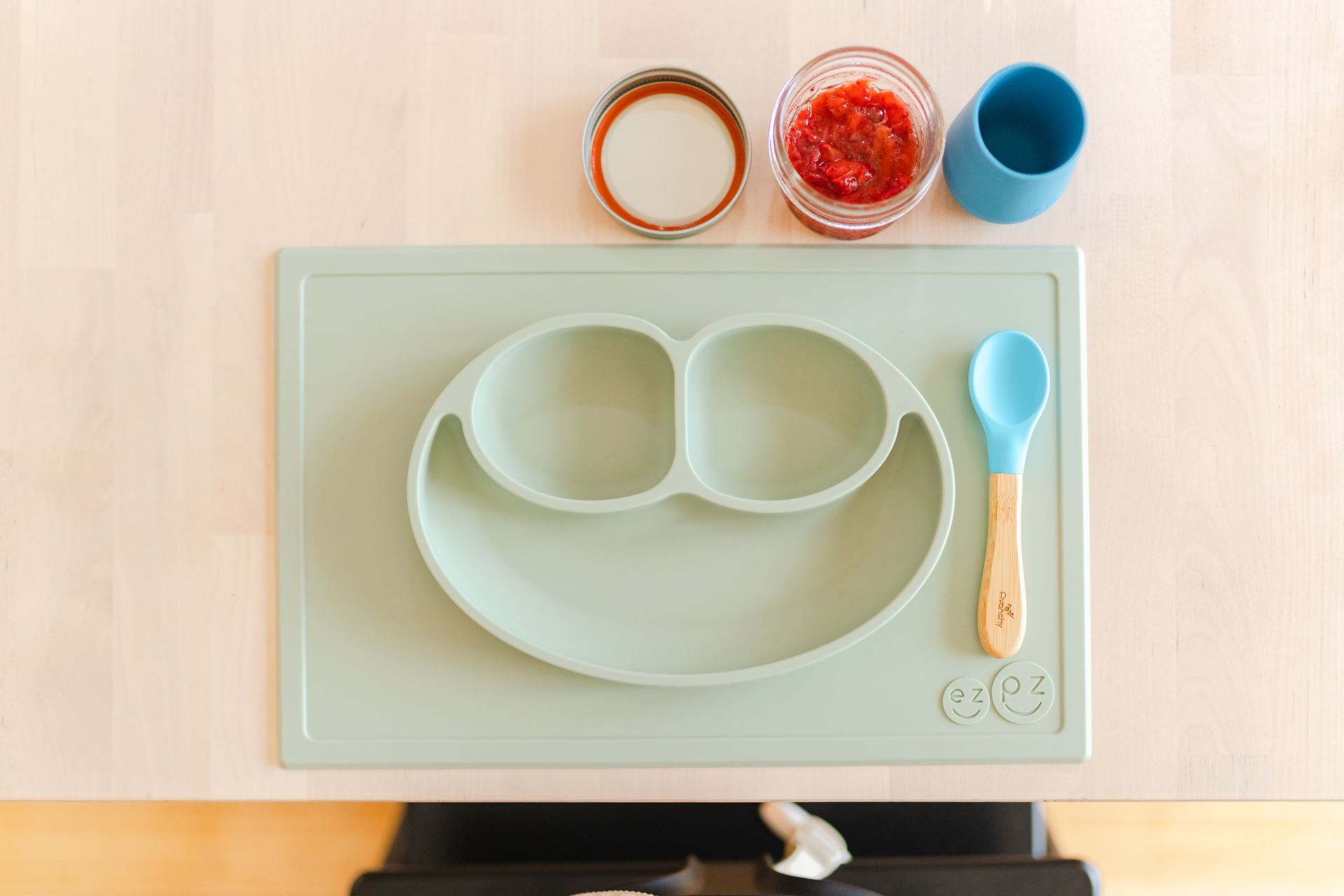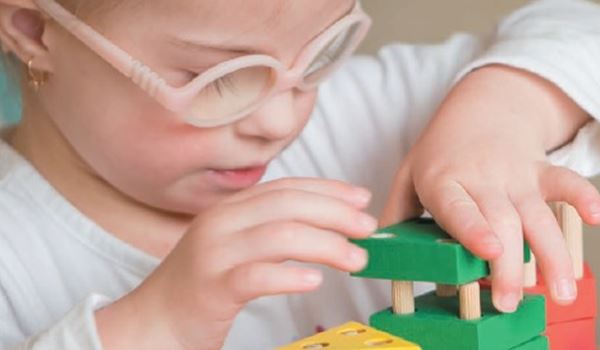Child Health Advice
Vaccination planner
Download a personalised vaccination calendar, which highlights the dates your child needs to have their vaccinations by.
Download from: www.nhs.uk
Childhood illness visual guide
Use this visual guide to help you identify common conditions and illnesses that may affect your child. Includes conditions such as measles, slapped cheek syndrome, chicken pox and warts.
Website: www.nhs.uk
Babies aged 0-12 weeks
Sleeping
Some babies sleep much more than others. Some sleep for long periods, others in short bursts. Some soon sleep through the night, while some don't for a long time.
Your baby will have their own pattern of waking and sleeping, and it's unlikely to be the same as other babies you know.
It's also unlikely to fit in with your need for sleep. Try to sleep when your baby sleeps.
If you're breastfeeding, in the early weeks your baby is likely to doze off for short periods during a feed. Carry on feeding until you think your baby has finished or until they're fully asleep. This is a good opportunity to try to get a bit of rest yourself.
If you're not sleeping at the same time as your baby, don't worry about keeping the house silent while they sleep. It's good to get your baby used to sleeping through a certain amount of noise.
For more information on Helping Your Baby Sleep, visit: Helping your baby to sleep - NHS (www.nhs.uk)
Nappys
When to change a nappy
Babies need frequent nappy changes.
Babies have very delicate skin so their nappy needs to be changed as soon as they wet or poo themselves, otherwise their skin becomes sore and red.
Changing your baby’s nappy as soon as possible after they’ve done a wee or poo will help prevent nappy rash.
Young babies may need changing as many as 10 or 12 times a day, while older babies need to be changed around 6 to 8 times.
For more information on How to Change Your Baby's Nappy, visit: How to change your baby's nappy - NHS (www.nhs.uk)
Crying
All babies cry, and some more than others. Crying is your baby's way of telling you they need comfort and care.
Sometimes it's easy to work out what they want, and sometimes it's not.
The most common reasons for crying are:
- hunger
- a dirty or wet nappy
- tiredness
- wanting a cuddle
- wind
- being too hot or too cold
- boredom
- overstimulation
There may be times of the day when your baby tends to cry a lot and cannot be comforted. Early evening is the most common time for this to happen.
This can be hard for you, as it's often the time when you're most tired and least able to cope.
The amount babies cry tends to peak at about 7 weeks, then gradually tail off.
For more information on Soothing a Crying Baby, visit: Soothing a crying baby - NHS (www.nhs.uk)
Bathing and Nails
You don't need to bathe your baby every day. You may prefer to wash their face, neck, hands and bottom instead. This is often called "topping and tailing"
Choose a time when your baby is awake and content. Make sure the room is warm. Get everything ready beforehand. You'll need a bowl of warm water, a towel, cotton wool, a fresh nappy and, if necessary, clean clothes.
Cutting your babys nails
Some babies are born with long nails and it's important to cut them in case they scratch themselves. You can buy special baby nail clippers or small, round-ended safety scissors. Or you could try filing them down with a fine emery board instead.
For more information on Washing and Bathing Your Baby, visit: Washing and bathing your baby - NHS (www.nhs.uk)
How Often Should my Baby be Weighed?
After the first 2 weeks, your baby should be weighed:
- no more than once a month up to 6 months of age
- no more than once every 2 months from 6 to 12 months of age
- no more than once every 3 months over the age of 1
Your baby will usually only be weighed more often than this if you ask for it or if there are concerns about their health or growth.
Your baby's length may also be measured at some of their developmental reviews.
Your child's growth will be recorded on centile charts in their personal child health record (PCHR), or red book. These charts show the pattern of growth healthy children usually follow, whether they're breastfed or formula fed, or having a mixture of both. Visit the Royal College of Paediatrics and Child Health website to see some examples of baby weight charts. Boys and girls have different charts because boys tend to be a little heavier and taller, and their growth pattern is slightly different. The curved lines on the charts are called centile lines. These show the average weight and height gain for babies of different ages. Your baby's weight and height may not follow a centile line exactly. Their measurements may go up or down by 1 centile line, but it's less common for them to cross 2 centile lines. If this happens, talk to a health visitor, who can advise you. It's normal for your baby to be on different centiles for weight and length, but the 2 are usually fairly similar. All babies are different, and your baby's growth chart will not look exactly the same as another baby's, even their own brother or sister.
Rashes in Babies and Children
Call 999 or Go To A&E if your child has a rash, is also unwell, and has any of these symptoms:
- A Stiff Neck
- Bothered By Light
- Seems Confused
- A High Temperature
- Their Rash Does Not Fade When You Press A Glass Against It
- Difficulty Breathing, Breathlessness, or Breathing Very Fast (Or Grunting Noises Or Their Tummy Sucking Under Their Ribs When Trying To Breathe)
- Their Skin, Lips or Tongue Look Pale, Blue, Grey or Blotchy
These can be signs of Meningitis.
It can be harder to see a change in skin colour on brown and black skin. Check the soles of the feet, palms, lips, tongue and inside the eyelids for colour changes
Other rash types are available to view on the NHS website here: Rashes in babies and children - NHS (www.nhs.uk)
Weaning
Introducing your baby to solid foods, also referred to as weaning or complementary feeding, starts when your baby is around 6 months old. Your baby should be introduced to a varied diet, alongside their usual breast milk or first infant formula
It can be confusing knowing when and how to start introducing solid foods. We’re here to guide you through the weaning journey and explain what it all means.
Getting Ready
By the time your baby is around 6 months old, they need more than breast milk or first infant formula to meet their needs. At this stage, they need solid foods as well – not as a replacement, but alongside their usual breast milk or first infant formula (which is why it's also known as "complementary feeding"). Weaning teaches your baby how to move solid food around their mouth, chew, and swallow solid foods.
What you need – here are some suggestions to get you started
High chair – your baby needs to be sitting safely and strapped in, in an upright position (so they can swallow properly)
First cup – encourage your baby to sip water from a cup with their meals (instead of a bottle). Open cups or free-flow cups (without a valve) help your baby learn to sip and is better for their teeth
Spoons – soft weaning spoons, usually made of rubber or plastic, are easier on your baby’s gums
Plastic bowls – ideally the ones with a suction base, otherwise they’re likely to end up on the floor!
Ice cube trays – very useful for batch cooking and freezing small portions
Bibs – easy to clean plastic or pelican bibs are best in the beginning
Messy mat – or even newspaper under the high chair, handy for messy eaters!
Babies learn a lot from watching you eat — sit down together for family mealtimes as much as possible
'Is My Baby Ready?'
Lots of parents wonder when and how to start introducing solid foods - with so much conflicting advice available it can be very confusing. You should wait until your baby is around 6 months old - this gives them time to develop properly, so they can cope with solid food.
What are the signs?
There are 3 clear signs, which, when they appear together from around 6 months of age, show that your baby is ready for their first solid foods, alongside breast milk or first infant formula. They will be able to:
- stay in a sitting position, holding their head steady
- coordinate their eyes, hands and mouth so they can look at their food, pick it up and put it in their mouth
- swallow food (rather than spit it back out)
The following behaviours can be mistaken for signs of being ready for solid foods:
- chewing fists
- wanting extra milk feeds
- waking up in the night (more than usual)
These are normal baby behaviours and not necessarily a sign of hunger, or being ready to start solid food. Starting solid foods will not make them any more likely to sleep through the night. Sometimes a little extra milk will help until they are ready for food.
If your baby was born prematurely, ask your health visitor or GP for advice on when to start weaning.
Young Children
Food and Snacks
Healthy Snacks for young children
You could try:
- raw vegetable sticks, such as cucumber and carrots, on their own or with hummus
- a piece of fruit
- a plain yoghurt with a sliced banana in it
- a slice of toast with cheese spread, hummus, peanut butter or a slice of ham
- some crackers, breadsticks or unsalted rice cakes with cheese and vegetable sticks
- a bowl of unsweetened cereal with whole milk
What Should I Put in Their Lunchbox for Nursery?
Good sandwich fillings include canned tuna or salmon, hummus, hard or cream cheese, ham, egg or peanut butter.
For egg and peanuts, see advice on food allergies in babies and young children.
You could also pack a few vegetable sticks, such as carrots, peppers or cucumber, as well as a container of bite-sized fruit – for example, a peeled satsuma or washed seedless grapes cut in half length ways. A box of raisins is fine if eaten alongside their lunch.
Examples of healthier sweet options include a yoghurt, fromage frais, a scone or a currant bun. If you include a fromage frais or yoghurt, do not forget a spoon. A piece of kitchen towel is also useful.
You can give water or whole milk in a leak-proof beaker.
If lunchboxes are not kept in the fridge at nursery, use an insulated box with an ice pack to keep food safe and cool.
Always check with your nursey for any food policies (for instance, some nurseries may be peanut or nut free). If your child has a food allergy, make sure to tell their nursery or childminder.
Read more about healthy lunchboxes.
Should They Avoid High Fibre Foods?
High Fibre Foods
Fibre is an important part of a healthy, balanced diet. But foods that contain a lot of fibre (such as wholemeal bread and pasta, brown rice and wholegrain breakfast cereals) can fill up small tummies, leaving little room for other foods.
This means your child can feel full before getting the calories and nutrients they need.
It's good for your child to try different kinds of starchy foods, but do not give only wholegrain or high-fibre foods before your child is 5 years old.
Sugary Drinks
Drinking sugary drinks increases the chance of tooth decay. If your child will only drink sugary drinks, it can take a while to break the habit.
Start to dilute the drinks with water, increasing the amount of water gradually over time, so the change is not too noticeable to them.
Water and whole milk are the best drinks for toddlers. See drinks and cups for babies and young children for a list of other healthier drinks.
For More Information, Visit: Young children and food: common questions - NHS (www.nhs.uk)
Sleep
Lots of young children find it difficult to settle down to sleep and will wake up during the night.
For some people, this might not be a problem. But if you or your child are suffering from a lack of sleep, there are some simple techniques you can try.
Every child is different, so only do what you feel comfortable with and what you think will suit your child. More information can be found here: Sleep problems in young children - NHS (www.nhs.uk)
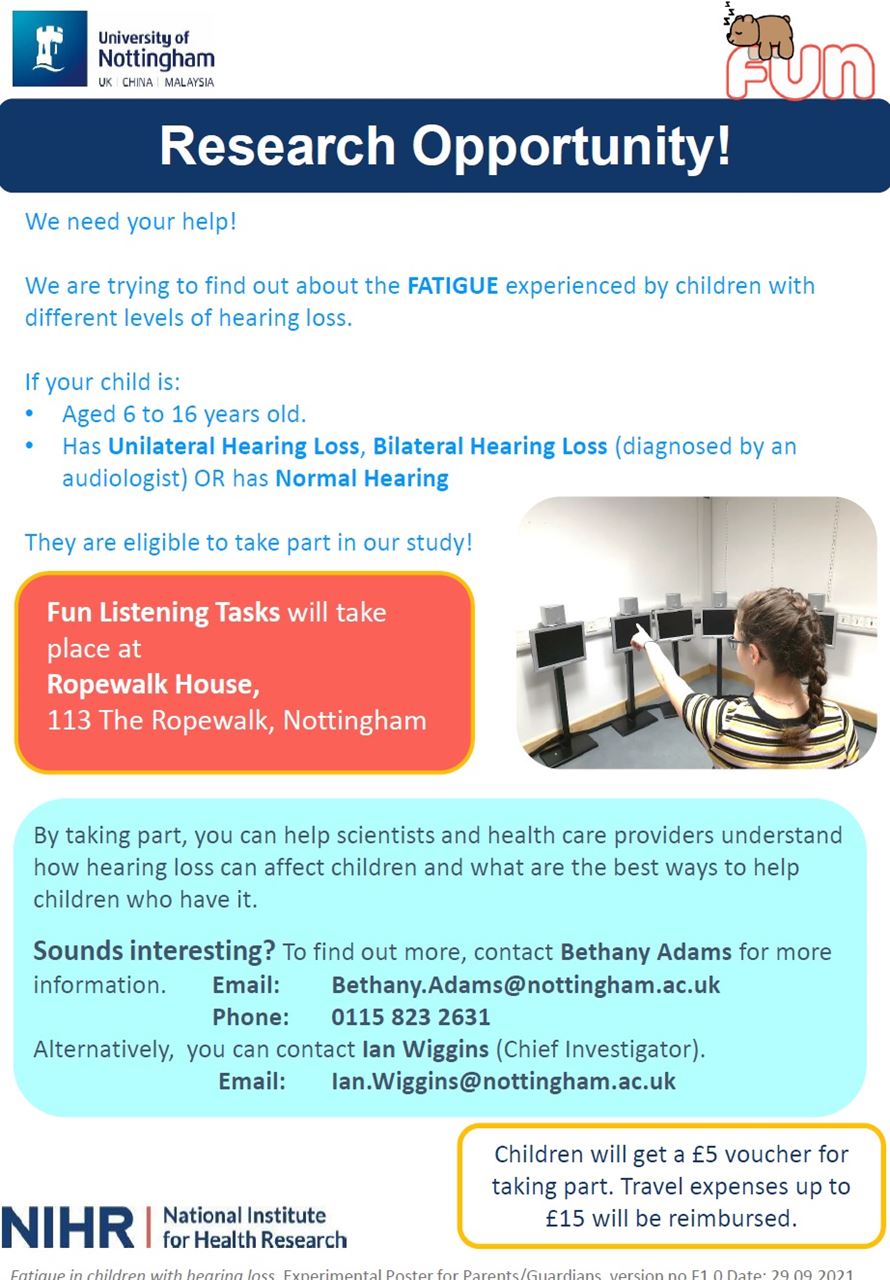
Research Opportunity
"We need your help! We are trying to find out about the FATIGUE experienced by children with different levels of hearing loss.
If your child is:
- Aged 6 to 16 years old.
- Has Unilateral Hearing Loss, Bilateral Hearing Loss (diagnosed by an audiologist) OR has Normal Hearing They are eligible to take part in our study!
Fun Listening Tasks will take place at Ropewalk House, 113 The Ropewalk, Nottingham.
By taking part, you can help scientists and health care providers understand how hearing loss can affect children and what are the best ways to help children who have it. Sounds interesting? To find out more, contact Bethany Adams for more information. Email: Bethany.Adams@nottingham.ac.uk Phone: 0115 823 2631 Alternatively, you can contact Ian Wiggins (Chief Investigator). Email: Ian.Wiggins@nottingham.ac.uk
Children will get a £5 voucher for taking part. Travel expenses up to £15 will be reimbursed."
